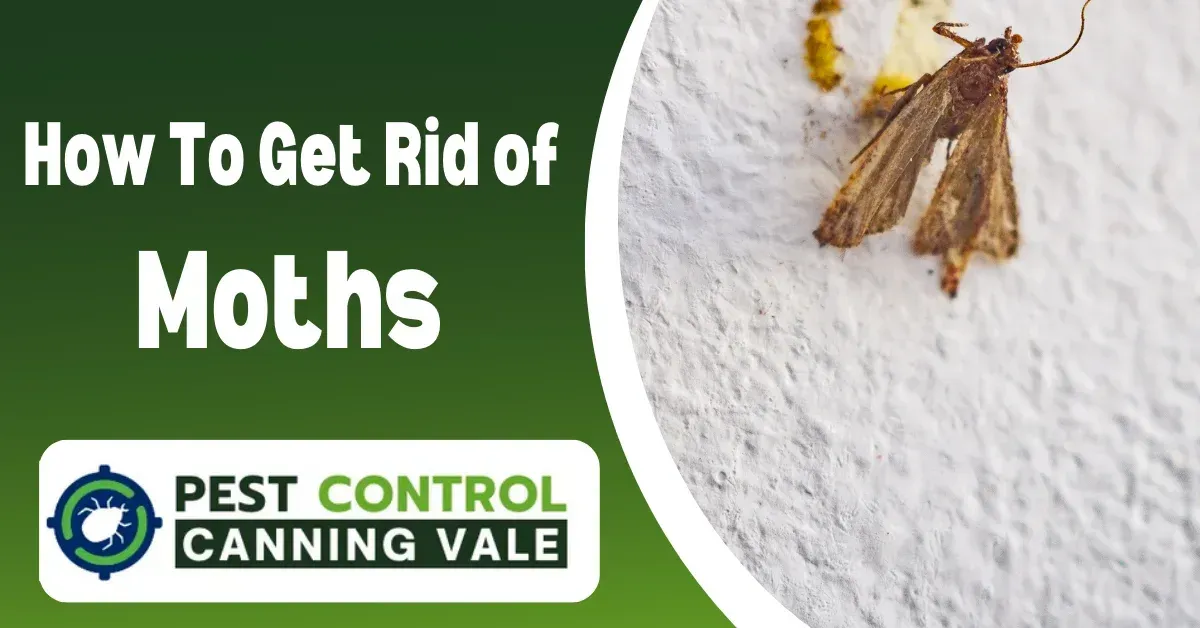PEST CONTROL CANNING VALE, THORNLIE, PARKWOOD, HARRISDALE, PIARA WATERS, WILLETTON AND SURROUNDING AREAS FOR OVER 10YRS
PEST CONTROL CANNING VALE, THORNLIE, PARKWOOD, HARRISDALE, PIARA WATERS, WILLETTON AND SURROUNDING AREAS FOR OVER 10YRS
Blogs

How To Get Rid of Moths
The Ultimate Guide of How To Get Rid of Moths
Moths can be quite the headache, can't they? Whether they're making themselves at home in your pantry or munching away at your favorite sweaters, these little critters can cause quite a bit of frustration, not to mention some unexpected expenses with damage repairs. But fear not! I've put together a comprehensive guide to help you tackle these pesky insects head-on, covering everything from identifying them to preventing future infestations. Whether you're a fan of DIY solutions or prefer calling in the pros, this guide will help you find the best approach to getting your moth situation under control.
Understanding Moths: What Are They?
Moths are close relatives of butterflies and belong to the order Lepidoptera. These nocturnal insects are mainly categorized into two types that might invade your home:
Clothing Moths: Such as the webbing clothes moth (Tineola bisselliella) and the casemaking clothes moth (Tinea pellionella), these guys love to feast on fabrics, particularly natural fibers like wool, silk, and fur.
Pantry Moths: Often referred to as Indian meal moths (Plodia interpunctella), these moths have a taste for stored food products like grains, flour, nuts, and dried fruits.
Life Cycle of Moths
Knowing a moth’s life cycle is key to effective elimination. Here’s a quick breakdown:
Eggs: These are laid by female moths in cozy spots like closets or pantry shelves and hatch within a few days to weeks.
Larvae: This stage is where the real damage happens, as they munch on clothes or food. This phase can last a few weeks to months.
Pupae: After enough eating, larvae spin cocoons and transition into the pupal stage to mature into adults.
Adults: Once matured, adult moths are all about mating and laying more eggs. Interestingly, they don't eat during this stage.
Signs of a Moth Infestation
Catching an infestation early can save you a lot of trouble. Here are some signs to watch out for:
Holes in Clothing: Look for tiny, irregular holes in garments and textiles, particularly in less disturbed areas.
Webbing and Cocoons: You might notice silken threads or small, white cocoons in your closets or pantry.
Moth Sightings: Spotting adult moths fluttering around could be a sign of infestation.
Larvae: These can appear as small, white or beige caterpillars in your food or on clothes.
DIY Moth Treatment Methods
If the infestation isn’t severe, you might want to try some DIY methods:
For Clothing Moths:
Clean and Launder: Hot wash and dry all affected items to kill eggs and larvae.
Freezing: Seal infested items in plastic bags and freeze for at least 72 hours.
Vacuuming: Thoroughly vacuum storage areas and dispose of the bag or contents immediately.
Storage Solutions: Use airtight containers or special garment bags for off-season clothes, and consider natural deterrents like cedar or lavender.
For Pantry Moths:
Inspect and Discard: Check all stored foods and throw out anything that’s infested.
Clean and Vacuum: Wipe down shelves with a vinegar solution and vacuum well.
Sealing Containers: Store food in airtight containers to prevent access.
Pheromone Traps: These can help reduce the breeding population by trapping adult males.
Professional Moth Pest Control Services
For more severe cases, or if DIY methods just don’t cut it, professional services might be necessary. Here’s what you can expect:
Inspection: Pros will conduct a thorough check to determine the extent of the issue and pinpoint problem areas.
Treatment Options: They might use a combination of chemical treatments, heat treatments, fumigation, or insect growth regulators to tackle the infestation at all stages.
Follow-Up and Prevention: Professionals will likely schedule follow-up visits to ensure the moths are gone for good and will offer tips to prevent future issues.
Safety Precautions During Moth Treatment
Whether you're going DIY or professional, safety is crucial:
Protective Gear: Always wear gloves, masks, and protective clothing when handling chemicals or infested materials.
Proper Ventilation: Keep your space well-ventilated when using chemical treatments.
Follow Instructions: Stick to guidelines provided by professionals and product labels to ensure effective and safe treatment.
Preventing Moth Infestations
The best strategy is prevention:
Regular Cleaning: Keep potential breeding grounds like closets and pantries clean and vacuumed.
Proper Storage: Use airtight containers for food and clothes, and consider natural repellents.
Inspect Food Items: Always check for signs of infestation in food packaging before purchasing.
With these tips and tricks up your sleeve, you're well on your way to a moth-free home. Good luck, and here's to not letting those pesky moths get the best of you!
Frequently Asked Questions (FAQs)
1. How do moths enter homes?
Moths can enter homes through open doors and windows, infested clothing or food items, and cracks or crevices in the building. They can also be brought in on secondhand furniture and textiles.
2. Are moths harmful to humans?
While moths do not bite or sting, they can cause significant damage to clothing, textiles, and stored food. The presence of moths can also lead to allergic reactions in some individuals.
3. Can moths live without food?
Adult moths do not feed, but their larvae require food to develop. Clothing moth larvae feed on natural fibers, while pantry moth larvae feed on stored food products.
4. How long does it take to get rid of moths?
The time required to eliminate moths depends on the extent of the infestation and the treatment method used. Professional treatments often provide faster and more effective results, typically within a few weeks.
Don't let moths ruin your peace of mind. Call Canning Vale pest control Today (08) 6373 2514
Canning Vale Pest Control
Nicholson Ct, Canning Vale WA 6155
(08) 6373 2514
Open 24 hours

